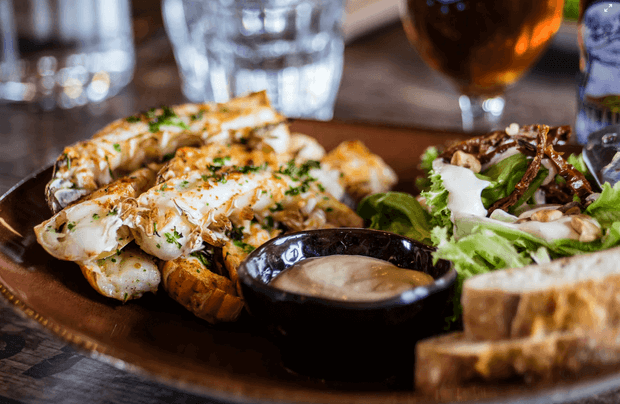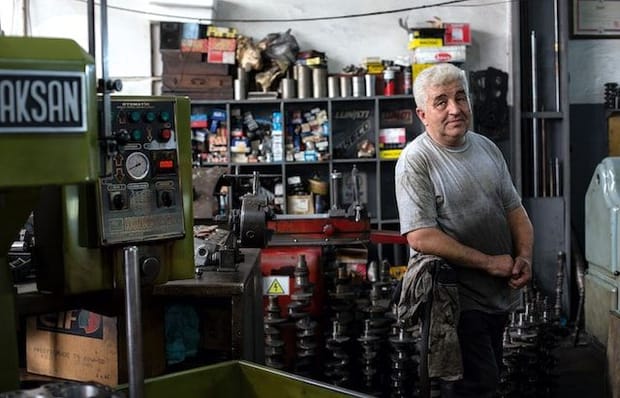The last time we wrote about what was in store for the restaurant industry was way back in December 2014. We predicted social media would become essential for restaurants, and that fast casual would rise in popularity at the expense of fast food. We think our predictions for 2015 were accurate, but the industry's definitely changed since then.
Fast casual's rise has been followed by a worrying fall, with 35 of the top 100 restaurant groups now loss-making, and significant closures for GBK, Prezzo, Byron, Jamie's Italian and many more chains, amounting to 10,000 jobs lost in 2018. With concerns over the impact of Brexit and reduced consumer spending power, it hasn't been a good year for the restaurant industry.
As 2019 gets underway, restaurants are planning their approach for what could be a difficult year ahead. While it might be tempting to sit still and avoid any unnecessary outgoings, taking note of changing consumer food and drink preferences (aka trends!) will help you thrive in 2019 and beyond.
#1 Fermented drinks
Last year was all about fermented foodstuffs like kimchi and sauerkraut, and 2019 will continue this theme with gut-friendly fermented drinks.
Kefir is top of the list, but we'll also see significant interest in 'shrubs' or drinking vinegars. It's been claimed that drinking vinegars reduce cholesterol, support the immune system and even aid weight loss. These claims haven't yet been proven, but this wellness trend looks set to go mainstream in 2019.
#2 Ancient or heritage grains
Selectively bred grains like corn, rice and wheat feed billions every day, but we're increasingly looking back in time to grains that haven't changed much in thousands of years. Quinoa was the start — now buckwheat, teff, chia, freekeh and the less glamorous barley and spelt are starting to gain in popularity.
It's the back-to-nature appeal of these grains that's driving this resurgence, as people turn their back on 'processed' foods. Restaurants can experiment with this trend by offering alternatives to wheat-based breads to accompany soups and breakfasts.
#3 Cutting waste
Food waste and plastic waste are both hot topics, giving restaurants a fantastic opportunity to generate marketing buzz and also save money by taking steps to tackle these issues. Food waste costs the restaurant sector £680 million each year [PDF], and comes from three sources: prep, spoilage, and customer plates.
There's plenty that restaurateurs can do to tackle all types of waste at their premises, but you'll get the best results if you develop a comprehensive action plan that your employees (and customers) support. Consider offering a choice of smaller portion sizes, offering packaging to let customers take home leftovers, or partnering with local food banks or charities to donate surplus produce.
#4 Overlooked British produce
We've heard the jokes about how we'll be eating nothing but turnips if the UK leaves the EU without a deal, but regardless of what happens on exit day, we think there will be an increase in interest in traditional British produce and vegetable gardens. That means more root veg and brassicas, for a start.
The challenge will be transforming unloved veg like swede and cauliflower into exciting and palatable dishes.
#5 Vegan dishes on (almost) every menu
There are over half a million vegans in the UK, and that number is rising every year. If you don't cater to vegans, or can only offer a half-baked vegan option when requested, you'll lose out on trade.
The demand for vegan fine dining will also increase in 2019, and new restaurants will emerge to take advantage of this demand.
#6 More virtual restaurants — and opportunities for new brands?
Restaurant delivery services have shaken up the industry, and we'll see this trend continue through 2019, with the formation of more 'virtual' or 'ghost' restaurants — if planning rules don't put a stop to them.
Detractors call these small units 'dark kitchens' — and there are valid health and safety concerns that go with them — but there are undoubtedly significant financial benefits to extending operations in this way.
Virtual restaurants eliminate front-of-house costs and significantly reduce business rates and rent. Established brands benefit the most from these setups, but 2019 may bring opportunities for fledgling brands that can't afford to run a traditional restaurant.
#7 Creative alcohol free drinks
Approximately 29% of young people and 20% of the adult population don't drink alcohol (as of 2015), yet many restaurants only offer entirely unimaginative alcohol free drinks. 2019 will reward businesses that put some thought into their drinks menus, with mocktails, cordials and zero-alcohol wines, spirits and beers all gaining ground. Lemonade and Pepsi won't cut it any more.
#8 Instagram-ready ice cream
Times have been tough for the high street of late, but ice cream parlours have somehow bucked the trend! There was a 20% increase in the number of parlours on the high street between 2016 and 2017, with consumers being won over by exciting flavours and novel ways of serving ice cream. Forget 99 Flakes - how about freakshakes, rolled ice cream, and instant liquid nitrogen ice cream?
It's unclear if this trend will remain confined to parlours or if restaurants will start to upgrade their ice cream offerings. Whatever form this trend takes in 2019, though, you can guarantee it'll be Instagram gold.
Final thoughts
You've probably already seen some of these trends emerge at your cafe, bar or restaurant. Maybe more customers are asking for soy milk instead of cow's milk with their tea, or your guests have expressed concern over leaving food to go to waste.
Are there any other food trends you expect to see in 2019? Share them with us below!





